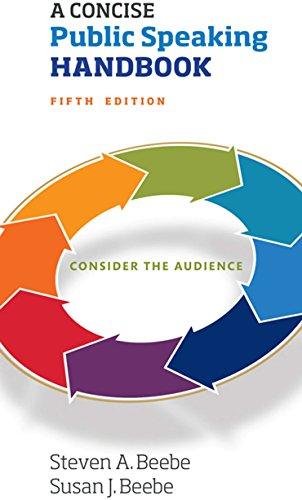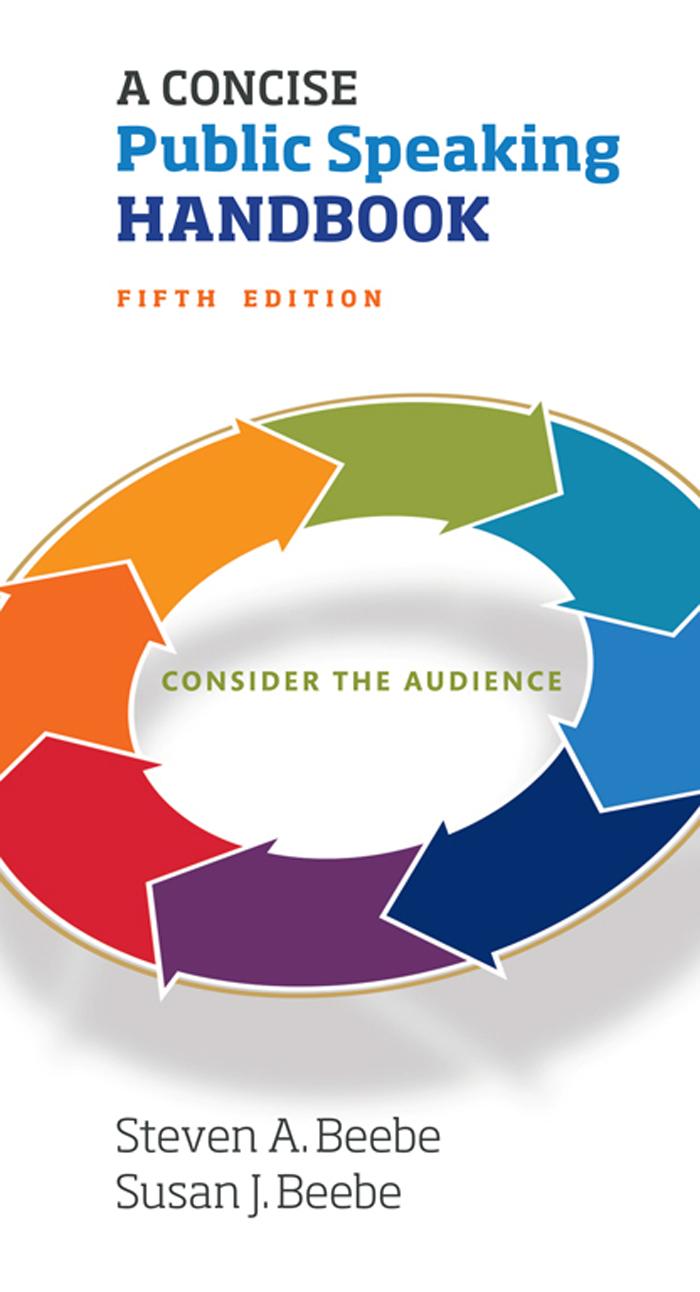ConcisePublicSpeakingHandbook,A5thEdition, (EbookPDF)

https://ebookmass.com/product/concise-public-speakinghandbook-a-5th-edition-ebook-pdf/

Huhtaniemi
https://ebookmass.com/product/encyclopedia-of-endocrine-diseases-2ndedition-ilpo-huhtaniemi/
ebookmass.com


Preface
and immediately, which leads to a better understanding of course material. A wealth of student and instructor resources and interactive materials can be found within Revel. Some of our favorites include the following:
• Videos and Video Self-Checks
Video clips appear throughout the narrative to boost mastery, and many videos have correlating selfchecks, enabling students to test their knowledge.
• Interactive Figures
Interactive figures help students understand hard-tograsp concepts through visualizations.
• Audio Excerpts
Throughout the text, audio excerpts highlight effective speech examples. Students can listen to audio clips while they read, bringing examples to life in a way that a printed text cannot. These audio examples reinforce learning and add dimension to the printed text.
• Integrated Writing Opportunities
To help students connect chapter content with personal meaning, each chapter offers two varieties of writing exercises: the Journal prompt, which elicits free-form, topic-specific responses addressing content at the module level, and the Shared Writing prompt, which encourages students to share and respond to each other’s brief responses to high-interest topics in the chapter.
For more information about all the tools and resources in Revel and access to your own Revel account for A Concise Public Speaking Handbook, Fifth Edition, go to www .pearsonhighered.com/revel.
New to the Fifth Edition
• New and expanded examples throughout the text ensure that the examples are contemporary and useful for students.
• To increase visual interest, the fifth edition is now in full-color.
• Updated How To boxes provide clear instructions for applying textbook concepts to real-life public speaking.
• Chapter 3 provides an overview of the audiencecentered speaking process, jump-starting the speechmaking process for students who are assigned to present speeches early in the term. A new example on developing your central idea has been added to this chapter. The section on gathering supporting material has also been updated.
• We have included new research on the consequences of plagiarism in Chapter 4.
• Chapter 5 has been streamlined by removing topics already covered in other chapters. The section on becoming an active listener has also been revised.
• The discussion of culture, ethnicity, and race in Chapter 6 has been updated based on new research.
• An updated section on evaluating Internet resources in Chapter 9 includes a new discussion of Wikipedia , guiding students to think critically about information they find on the Internet. The section on interviewing has also been streamlined and revised.
• The revised discussion of primacy, recency, and complexity in Chapter 11 helps students understand how to organize their main points based on one of these three principles.
• Chapter 12, which covers outlining and revising your speech, has been moved before the chapters on developing an introduction and conclusion.
• A new example on reemphasizing the central idea in a memorable way has been added to Chapter 14.
• Chapter 17 offers new tips for using gestures effectively and monitoring your facial expressions.




Acknowledgments
Thanks to Ellen Keohane, our skilled development editor, for spearheading this revision and working so closely with us. We are extremely grateful to all of the instructors who provided us with invaluable feedback that helped shape the features and content within this new edition. We’d like to extend our sincere appreciation to the following instructors who shared their expertise and insight: Kristin M. Barton, Dalton State College; Hope E. Bennin, Big Sandy Community and Technical College; Jennifer Fairchild, Eastern Kentucky University; Diane Ferrero-Paluzzi, Iona College; Amanda Houdashell, Mesa Community College; and Mark May, Clayton State University.
Steven A. Beebe
Susan J. Beebe
code, made up of verbal or nonverbal symbols, that an audience can recognize. The speaker may encode into words (for example, “The fabric should be two inches square”) or into gestures (showing the size with his or her hands).
• The message in public speaking is the speech itself— both what is said and how it is said.
• If a speaker has trouble finding words to convey his or her ideas or sends contradictory nonverbal symbols, listeners may not be able to decode the speaker’s verbal and nonverbal symbols back into a message.
• A message is usually transmitted from sender to receiver via two channels: visual and auditory. Audience members see the speaker and decode his or her nonverbal symbols—eye contact (or lack of it), facial expressions, posture, gestures, and dress. If the speaker uses any visual aids, such as PowerPoint™ slides or models, these too are transmitted along the visual channel. The auditory channel opens as the speaker speaks. Then the audience members hear words and such vocal cues as inflection, rate, and voice quality.
• The receiver of the message is the individual audience member, whose decoding of the message will depend on his or her own particular blend of past experiences, attitudes, beliefs, and values. An effective public speaker should be receiver- or audience-centered.
• Anything that interferes with the communication of a message is called noise. A noisy air conditioner or incessant coughing is an example of external noise Internal noise may stem from either physiological or psychological causes and may directly affect either the source or the receiver. A bad cold (physiological noise) may cloud a speaker’s memory or subdue his or her delivery. An audience member who is worried about an upcoming exam (psychological noise) is unlikely to remember much of what the speaker says. Noise interferes with the transmission of a message.
Communication as Interaction
One way that public speaking differs from casual conversation is that the public speaker does most or all of the talking. But public speaking is still interactive. See Figure 1.1 for an interactive model of communication. Without an audience to hear and provide feedback, public speaking serves little purpose.
The context of a public-speaking experience is the environment or situation in which the speech occurs. It includes such elements as the time, the place, and both the speaker’s and the audience’s cultural traditions and expectations. For example, if the room is hot, crowded, or poorly lit, these conditions affect both speaker and audience. A speaker who fought rush-hour traffic for 90 minutes to arrive at his or her destination may find it difficult to muster much enthusiasm for delivering the speech.
Communication as Transaction
The most recent communication models focus on communication as a simultaneous process. For example, in a two-person communication transaction, both individuals are sending and receiving at the same time. In public
